















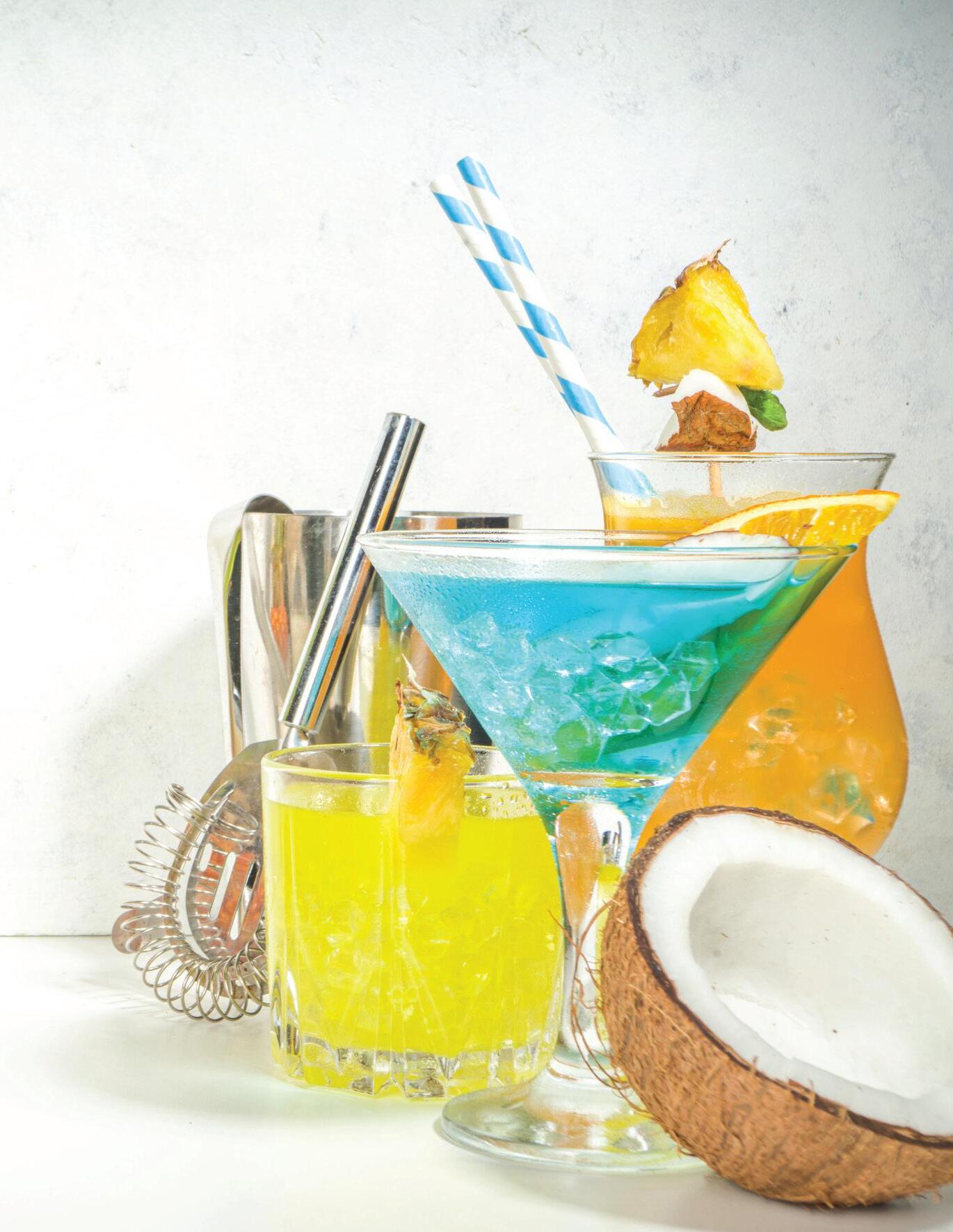
June
e ditor and Publisher: luis@gotrum.com
e xecutive e ditor: margaret@gotrum.com
Cigar and r um: philip@gotrum.com
Angel’s s hare: paul@gotrum.com
r um h istorian: marco@gotrum.com
r um in the n ews: mike@gotrum.com
Cooking with r um: sue@gotrum.com
w ebmaster: web@gotrum.com
d irector of Photography: art@gotrum.com
i f you would like to submit news or press releases, please forward them to:

news@gotrum.com
You can download the free electronic version (low-res) of this magazine, or purchase the high resolution printed version at:
WWW. gotr U m . com

The printed version of “ g ot r um?” is produced with F s C-certified paper, which means it is from responsibly managed forests and verified recycled sources.


i have written before about how yeast evolved over millions of years, to consume sugar and to produce alcohol. s ugar, a readily available source of life-sustaining energy, is produced by many plants around us, and it is consumed by an even larger number of microorganisms. Yeast evolved the ability to create ethanol from sugar as a survival strategy. This form of chemical warfare, allows it to sanitize its environment, ridding it of competition, so that it can claim total control over the source of the sugar.
i nterestingly, us humans have also taken advantage of sugarcane, which is nature’s largest source of sugar, to engineer a way to obtain energy from it, not only for metabolic purposes, but for many of our everyday industrial and domestic purposes as well, in the form of electric energy !
Bagasse (the sugarcane fiber leftover from the cane juice extraction process) is an excellent source of fuel for furnaces that boil water to produce steam that can, in turn, power milling equipment and electric generators. e lectric generation technology is constantly evolving, becoming more efficient and being adopted by more and more sugarcane mills around the world.
l ast month we started a new series (“ The Sweet Business of Sugar ”) devoted to exploring all aspects of the sugar industry. m ay’s issue gave us an overview of the global sugar economy and, starting with this month’s issue, we’ll explore sugar-producing countries individually.
This month’s focus is g uatemala (pages 44 to 57). i t is worth noting that the 10 active sugar mills in the country produced 27 percent of g uatemala’s total energy, and that 91% of the fuel responsible for that energy generation came from bagasse o ther sources included charcoal and methane from bio digestors (from vinasse/spent wash treatment). As you can see, sugar has been, and will continue to be, a great source of energy.
To the sweet grass!
l uis Ayala, Editor and Publisher
http://www.linkedin.com/in/rumconsultant
do you want to learn more about rum but don’t want to wait until the next issue of “got rum?”? Then join the “rum lovers unite!” group on linkedin for updates, previews, Q&A and exclusive material.

i n m arch 2023, d on Q added two new rums to their premium line with the addition of their Port Cask and Zinfandel Cask finished expressions. For the Zinfandel cask release, they aged their molasses-based column still rum in American white oak ex-bourbon barrels from o ctober 2009 to July 2012. Then, at the end of 2018, the company blended these barrels and put the rum in California Zinfandel casks, where it rested until being blended to 40% AB v and bottled in s eptember 2022.
m y name is Paul s enft - r um r eviewer, Tasting host, Judge and w riter. m y exploration of r ums began by learning to craft Tiki cocktails for friends. i quickly learned that not all rums are created equally and that the uniqueness of the spirit can be as varied as the locales they are from. This inspired me to travel with my wife around the Caribbean, Central America, and u nited s tates visiting distilleries and learning about how each one creates their rums. i have also had the pleasure of learning from bartenders, brand ambassadors, and other enthusiasts from around the world; each one providing their own unique point of view, adding another chapter to the modern story of rum.

The desire to share this information led me to create www. r umJourney.com where i share my experiences and reviews in the hopes that i would inspire others in their own explorations. i t is my wish in the pages of “ g ot r um?” to be your host and provide you with my impressions of rums available in the world market. h opefully my tasting notes will inspire you to try the rums and make your own opinions. The world is full of good rums and the journey is always best experienced with others.
Cheers!
The 750 ml bottle is the same design used for all the expressions in the d on Q premium line. The gold cap is engraved with the d on Q logo, wrapped in clear security wrap, and holds a synthetic cork to the bottle. e mbossed above the front and back labels, the words s errallés r eserva appear, adding a nice visual touch to the bottle design. The labels are loaded with information about the rum, sharing details about its aging process.
The rum holds a medium amber color that lightens slightly in the tasting glass. s wirling the liquid creates a medium band that slowly thickens and releases a couple of waves of legs before evaporating.


Pouring the rum into the glass released a strong vanilla aroma. After letting the liquid rest for a few minutes, i discovered notes of dried apricot, blackberry, and fig, along with other
fruit and berry notes, with hints of toasted oak tannins rounding out the experience.

The first sip of the rum is a fine balance of deep m adagascar vanilla and robust fruit and berry notes. Additional sips reveal the tango of flavors that balance between the rum flavors and the nuances of the cask finish, with the caramel, vanilla, and toasted oak tannins from the rum influenced by the blackberry, cherry, fig, dried cranberry, and apricot notes with a hint of allspice and anise drifting underneath.
r eview
w hen evaluating rums, i have only had a few that were finished in Zinfandel casks, and they have all been different. i found the d on Q d ouble Cask Finish Zinfandel Cask r um to be a well-balanced expression and incredibly different than anything else i have tried in their portfolio. This is one you want to take your time with to sip, savor, and enjoy neat or with a single ice cube. By design, this rum, like the others that have appeared in their premium line, showcases the strength of d on Q’s blending team and provides a flavorful experience that any rum enthusiast can look for when they want to experience something unique in their glass.

o ne of the highlights of the 2022 Tales of the Cocktail was attending a tasting and bar events that featured the r on Colon s alvadoreno line. All three rums made a positive impression, and i made a note to pick up a bottle when i found it in the stores so i could give it a proper evaluation. The day arrived while shopping in downtown Atlanta and discovering the h igh Proof rum expression on the shelf. o ne of the things i always find interesting is when someone thinks outside of the box with a rum blend. The makers of r on Colon s alvadoreno use a six year old, column still rum from l icorera Cihuatan as the base for the rum blend. They also used unaged Jamaican pot still rums from h ampden, m onymusk, and w orthy Park and three year old pot still rum from w orthy Park, blended it all together, bottled it in n ew York, and presented the rum to consumers at 55.5% AB v.
This rum is sold in a tall, opaque, dark 750 ml bottle that has an olive color when held up to the light. The wooden cap holds a synthetic cork and is secured to the bottle with a tight security wrap that i had to cut off to open the bottle. The cap has the company logo embossed on the top in silver metal. The bottle is wrapped in a single label that provides some of the details about the rum, and while it looks great and stands on the shelf, the fact that it does not mention that it is a blend of Jamaican and e l s alvadorian rums is a missed opportunity. e specially when you consider how popular Jamaican rums are in the marketplace.
The rum has a pale amber color with a tiny bit of particulate suspended in the liquid. s wirling the liquid creates a thin band that quickly thickens and releases lightning fast legs down the side of the glass before leaving a ring of residue around the glass.

The rum is quite aromatic, filling the air with notes of grilled pineapple. After i let the liquid sit for a few minutes, i discovered notes of crème brule, lime zest, what i define as vegetal Jamaican funk, and baked banana pudding drifting in, punctuating the experience with fruity sweetness.
s ipping the rum is interesting as the caramelized vanilla coats the tongue with a fiery entry. Then the fruit notes of grilled pineapple and banana rush in, balanced by notes of dried tobacco leaf, black pepper, and dark roast coffee. The lime zest i picked up comes in later, along with some pleasantly light toasted oak notes. The balance of the flavors lingers in a pleasant dance until the fruit flavors take over and linger in a nice, long, dry finish.
r eviewi knew from my previous experience with the rum that it was interesting, but i did not remember it being “this” interesting and flavorful. This is why i never base my reviews on what i experience at shows and instead use that time as motivation to track something down later. s ince this rum has such a high proof, justly earning the name in the title, i evaluated it using a series of tiny sips to keep from burning my palate out. The e l s alvador rum component helps ground and balance the spirit, creating a solid foundation for the Jamaican component to shine and provide the lovely complexity i enjoyed. i was expecting the wood notes to dominate at the finish, but i found the fruit taking over, adding a nice plot twist to the overall experience.
As far as deploying this spirit in cocktails, it was surprisingly good in a high proof d aiquiri, in a rum punch, and in another fruit based tropical cocktail i sampled it in. o verall, i found it to be a reasonably priced rum that i could use in a variety of tropical cocktails. n ow that i can easily find it, i will put it in rotation and look forward to sharing it with friends.



 by Chef Susan Whitley
by Chef Susan Whitley

i ngredients:
• 2 (2-pound) r acks Baby Back Pork r ibs
• 1 Tbsp. Jerk s easoning Blend
• 1 C. d ark r um
• * s ticky r um BBQ s auce- see recipe below
Directions:
1. r inse and pat ribs dry. i f desired, remove thin membranes from backs of ribs, using a paper towel for a better grip. (This will make ribs more tender.) r ub ribs evenly with jerk seasoning.
2. Pour rum in a shallow dish or zip-top plastic freezer bag; add ribs, turning to coat. Cover or seal, and chill 1 hour, turning occasionally.
3. l ight 1 side of grill, heating to medium heat (325° to 350°). Place a drip pan beneath unlit side. r emove ribs from marinade, let drain quickly, and place on grate above drip pan. g rill (with lid closed), turning occasionally, 2 1/2 to 3 hours or until ribs are browned and tender and meat has shrunk back from bones.
4. Brush ribs with 1/2 cup s ticky r um BBQ s auce, and grill 15 more minutes. s erve with additional sauce. Yield: m akes 4 servings

* s ticky r um BBQ s auce
i ngredients:
• 1 C. d ark Brown s ugar, firmly packed




• ½ C. Ketchup
• ½ C. d ark r um
• 1 Tbsp. Jerk s easoning Blend
• 1 tsp. l ime Zest
• 2 Tbsp. Fresh l ime Juice
• 2 Tbsp. s oy s auce
• 1 tsp. Fresh g rated g inger
• 2 g arlic Cloves, minced
• 1 g reen o nion, finely chopped
• ¼ tsp. l iquid s moke

d irections:
Combine ingredients in a small saucepan over medium heat. s immer for about 6 or until slightly thickened. r emove from heat and allow to cool. r efrigerate left over in a sealed container. w ill keep for up to 2 weeks.
g ot r um? June 2023 - 12
Photo credit: www.isthambul.comi ngredients:
• 1 Tbsp. g raham Cracker Crumbs
• 1/2 C. (3 oz.) Butterscotch Chips
• 1/3 C. Butter
• 2 w hole e ggs
• 1 e gg Yolk
• 1/4 tsp. r um e xtract
• 2 Tbsp. d ark r um
• 1/3 C. d ark Brown s ugar, firmly packed




• 1/3 C. All-purpose Flour

Directions:
1. Preheat oven to 400°F.
2. s pray bottoms and sides of 3 (6-ounce) custard cups with baking spray. s prinkle flour into each cup, shake excess flour. s prinkle a teaspoon of graham cracker crumbs onto bottom and around side of each cup.
3. i n 1-quart saucepan, melt butterscotch chips and butter over medium heat, stirring constantly. r emove from heat and cool slightly, about 5 minutes.
4. i n a large bowl, beat whole eggs, egg yolk, rum extract and dark rum with wire whisk or egg beater until well blended. Beat in brown sugar. Beat in melted butterscotch mixture and flour until well blended. d ivide batter evenly among custard cups and place cups on cookie sheet, use cookie sheet that has sides.
5. Bake 13 to 16 minutes or until sides are set and centers are still soft (tops will be puffed and cracked). l et stand 5 minutes. r un small knife or metal spatula along sides of cakes to loosen. i mmediately place individual dessert plate upside down over top of each cup; turn plate and cup over. r emove cup. s erve warm.






Are you looking for festive reasons to raise your glass this month?
h ere are a few of them!
w rite to us at info@gotrum.com if we missed any!
JUN 2 National m oonshine Day
JUN 3 World c ider Day
JUN 4 National c ognac Day
JUN 12 World g in Day
JUN 14 National Bourbon Day

JUN 19 National m artini Day


Featured Cocktail: s piced r um Cider (June 3rd)
r um and Apple Cider are frequently combined in hot/warm drinks during the winter holiday season. h ere is a recipe to enjoy this excellent combination of flavors during the hot summer days.

i ngredients:
• 1 ½ oz. s piced r um
• 3 oz. Apple Cider
• 1 oz. Fresh l emon Juice
• 1 tsp. m aple s yrup (preferred) or s ymple s yrup
• A dash of o range Bitters
• i ce
• o ptional garnishes: Apple s lices, Cinnamon s ticks, s tar Anise and Brown s ugar for the rim
Directions:
1. Add all the ingredients (except the garnishes) into a cocktail shaker, add a few ice cubes. s hake vigorously for a few seconds and pour into a glass over ice. i f you don’t have a cocktail shaker, you can mix everything in the glass. Just stir it really well and add ice.
2. Add the garnishes and rim the glass with sugar, if desired. e njoy!

After being in the industry for 25+ years and writing for g ot r um! for over 7, i often believe i have heard of every rum drink on the planet. n aive of me, yes, as there are certainly thousands out there and especially those that are considered “modern classics” (cocktails invented between 1970 and today).
The Haitian Divorce is an enjoyable one i came across when visiting Austin, Texas, last week.
h i, my name is Cris d ehlavi, and i have been writing for Got Rum? for almost 8 years. For nearly 20 years, i ran a bar program at the prestigious 4- d iamond o hio restaurant “ m at m iranova.” i t was one of the first craft cocktail bars in Columbus and garnered dozens of awards. The restaurant closed in 2020, and it was then that i made a move from being behind the stick to working as Brand e ducator for d iageo h ospitality Partnership.


i have been committed to mentorship my entire professional life and have been one of the leaders of the Cocktail Apprentice Program at Tales of the Cocktail since 2015. i n 2013 i completed the BA r 5- d ay program, and i am happy to announce that i passed my wse T l evel 3 in s pirits this past fall.
o ne of my proudest moments was being inducted into the d ame h all of Fame in 2016. i hope you enjoy my stories about cocktails and rum!

g ot r um? June 2023 - 20
Tom r ichter originally designed this eclectic cocktail at The Beagle in n ew York City. s adly, the e ast v illage sherry-centric bar closed its doors in 2013, but this original recipe lives on. r ichter is the owner and creator of Tomr’s Tonic, a cinchona-based syrup meant to be mixed with gin and club soda. i n 2012 when the h aitian d ivorce was created, The Beagle had a running theme of matrimony-style drinks, everything from “ s econd m arriage” to “ s hotgun w edding,” designed by co-owner and beverage director d an g reenbaum. Tom r ichter started playing around with different iterations of the o ld Fashioned (bourbon, sugar, bitters) and loved the combination of rum and mezcal, which provided notes you would most commonly smell and taste in a single malt scotch. The inherent smoky quality of mezcal mixed with the funky flavors of r hum Agricole really pack a punch of complexity. This twist on a r um o ld Fashioned adds even more with Pedro Ximenez s herry, which provides raisins, dates, and fig flavors. i absolutely love that it is written with both a lime AND orange twist, too. The oils of the lime brighten it right up, while the orange tends to round out all the ingredients.

h ave fun with this one! r emember that not all h aitian rums taste the same, and all mezcals definitely do not. i would encourage you to use a lightly smoky mezcal so that the rum still shines through and an aged h aitian rum so that it is the star of the drink.
Pro Tip: This cocktail is wonderful with chocolate bitters in place of the Angostura, and if you are a cigar-afterdinner type of person, this may just be the drink for you!!
h aitian Divorce
i ngredients
• 1.5 oz Aged h aitian r um
• .75 oz e spadin m ezcal
• .5 oz Pedro Ximenez s herry
• Two dashes of Angostura Bitters
Directions
i n a mixing glass, add all ingredients and stir well with ice. s train into a rocks glass with one large ice cube. Zest a peel of lime and orange over the drink, and place it into the glass. e njoy!!


r eviews of books related to sugarcane, milling, fermentation, distillation, aging, blending and other topics related to the production or history of rum.

www. r um u niversity.com

(Publisher’s r eview)
m eet the natural lovechild of the popular local-foods movement and craft cocktail scene. i t’s here to show you just how easy it is to make delicious, oneof-a-kind mixed drinks with common flowers, berries, roots, and leaves that you can find along roadsides or in your backyard.

Foraging expert e llen Zachos gets the party started with recipes for more than 50 garnishes, syrups, infusions, juices, and bitters, including Quick Pickled d aylily Buds, r ose h ip s yrup, and Chanterelleinfused r um. You’ll then incorporate your handcrafted components into 45 surprising and delightful cocktails, such as s tinger in the r ye, d on’t s ass m e, and Tree-tini.
About the Author

e llen Zachos is an expert forager and longtime foraging instructor. s he is the author of six books, including The Wildcrafted Cocktail and Backyard Foraging s he is co-host of the Plantrama podcast and can be found online at backyardforager. com.
Publisher: s torey Publishing, ll C (February 16, 2021)
l anguage: e nglish
Paperback: 240 pages is B n -10: 163586416X is B n -13: 978-1635864168
i tem w eight: 1.02 pounds
d imensions: 6.56 x 0.63 x 8.56 inches
t he Wildcrafted c ocktail: m ake your o wn f oraged s yrups, Bitters, i nfusions, and g arnishes

your o ne- s top s hop for a ged r ums in Bulk!
• Column- d istilled, Pot- d istilled or Blends
• h igh Congener ( i ncluding h igh e sters), l ow Congener or Blends
• Aged in American or French o ak Barrels
• Aged in r ye w hiskey, Bourbon, Tequila, Armagnac, Port, s herry and w ine Barrels
• s ingle Barrels and s econd Aging/Finish

• d istilled in the us A, Central America, s outh America or in the Caribbean

• o ver 150 m arks/ s tyles Available, plus Custom Blends
• l ow m inimums and Fast Turnaround, w orldwide s hipping
i was born in 1954 in a little town in Tuscany ( i taly) where i still live. i n my youth, i got a degree in Philosophy in Florence and i studied Political s cience in m adrid, but my real passion has always been h istory and through h istory i have always tried to understand the world, and men. l ife brought me to work in tourism, event organization and vocational training, then, already in my fifties i discovered rum and i fell in love with it.
i have visited distilleries, met rum people, attended rum Festivals and joined the r um Family. i have studied too, because r um is not only a great distillate, it’s a world. Produced in scores of countries, by thousands of companies, with an extraordinary variety of aromas and flavors, it is a fascinating field of studies. i began to understand something about sugarcane, fermentation, distillation, ageing and so on.
s oon, i discovered that rum has also a terrible and rich h istory, made of voyages and conquests, blood and sweat, imperial fleets and revolutions. i soon realized that this h istory deserved to be researched properly and i decided to devote myself to it with all my passion and with the help of the basic scholarly tools i had learnt during my old university years.
i n 2017 i published the book “A meri CA n rum – A s hort h istory of r um in e arly America”
i n 2019 i began to run a Blog: www. therumhistorian.com
i n 2020, with my son Claudio, i have published a new book “F ren C h rum – A h istory 1639-1902”.
i am currently doing new research on the h istory of Cuban r um.
“
This month our readers will not find the customary article on the history of Cuban rum. Certainly not because the series is over, we are still just at the beginning, but because i thought it useful to dedicate this month’s space to the review of a book on spirits just published: i an Tattersall and r ob d esalle’s “ Distilled. A Natural History of Spirits ”, 2022. The authors are two eminent, renowned scientists: “ r ob d e s alle is a curator at the American m useum of n atural h istory, n ew York City. i an Tattersall is curator emeritus, division of Anthropology, American m useum of n atural h istory.”
The two are also wine enthusiasts and a few years ago they published “ A Natural History of Wine ” and, later, “ A Natural History of Beer .” i read the first one and i liked it. i am not a wine expert, even though i drink it regularly, and as far as i can tell it is an excellent work, full of information and reflections, as well as skilfully written.
Telmo Pievani is an eminent philosopher of science and is part of a large international

team of scientists studying evolution; he is also a great scientific populizer, very well known in my native country, i taly. i n an interview with i an Tattersall he mentions his new book about spirits.

Pleasantly surprised, i searched for the book and bought it right away: at last, real scientists dedicate themselves to our favorite topic. w hen the book arrived, i discovered that, in addition to the two main authors, other academics had collaborated on individual chapters. m oreover, this book is published by the authoritative Yale u niversity Press, and it is a beautiful object too: quality paper, good binding, beautiful designs; in short, everything. Also, i confess that i was filled with pride when i saw one of my “ go T rum ?” articles mentioned in the bibliography.
But then i read it and everything changed….
i n a nutshell, the authors know little, and badly, about spirits, and even less about their history. u nfortunately, it seems to me that they know history in general little and badly. There are interesting parts, but also many banalities and above all many gross mistakes. And i got angry. i t is not right to write so slovenly about spirits, even less if it is done by eminent scientists and if the text is published by an authoritative publishing house.
There are some positive things. The clarification on the taste of ethanol is undoubtedly useful, it explains much of the pleasure of drinking spirits: “ethanol is far from being a tasteless substance, as is often believed. i nstead, once it rises above a concentration of about 20 percent by volume, well above anything you would expect to find in a conventional beer or wine, it imparts subtly bittersweet and uniquely mouth-filling quality that has yet to be replicated by any other substance.”
There is also some interesting information about what might happen in the near future: “The notion of synthesizing a product to replace the alcohol that has traditionally been distilled brings us to the subject of synthetic alcohol substitutes. … if a synthetic substance could be produced
that mimics the effect of alcohol without its side effects, many of the unwanted effects of alcohol would disappear. … e ven better, antidotes could be administrated to counter their inebriating effects, allowing one to hop in one’s car and safely drive home after a night of drinking.”
But then there are many things that are wrong. They are too many to list all of them, i will dwell just on the most glaring errors, simply in order of appearance.
About the Column s till, they evidently don’t know that the French engineer Jean-Baptiste Cellier-Blumenthal, and not Aeneas Coffey, invented the first continuously working distillation column and patented it in 1813. They go on to write: “The big physical contrast between the pot still and the Coffey stills is the tall two-distilling-column setup in the Coffey still, versus the single and usually bulbous distilling vessel of the pot still. … most spirits categories on the market today may
be made on either kind of still; and there are now ‘hybrid’ stills that make the original definitions and rules all the more confusing.”
f alse . As if the difference between Pot and Column still were merely a matter of design. r egarding this i think it is better to read again r ichard s eal’s “ Aeneas Coffey, John Dore and Foursquare ”, rum di A ries B log , February 9, 2021. “The dichotomy is not pot still vs column still but batch still vs continuous still. All still designs fall into one of the latter two categories. The addition of fractionation or enhanced rectification to a batch still is still a batch still. The simple batch still relies solely on the lyne arm for rectification. e nhancing this effect does not change the fundamental nature of the still. … A batch still will produce a changing output over time (colloquially the heads, then hearts, then tails) from a single charge (batch) that itself changes as it is distilled. A continuous still produces an unchanged output that varies by position (not by time) on an unchanging charge that is fed continuously. h eads, hearts, tails are drawn off simultaneously from different positions. This is the fundamental distinction between the two processes which also explains why the two can never make the identical spirit.
e arly column shaped stills (e.g. the column Pistorius still) should not be confused with a column or continuous still, it was a batch still and the s avalle or Cellier Blumental stills are not fitted with “a pot still” just because they had a pot shaped base/kettle – there were in fact continuous (or column) stills.”
l et’s go on. According to our authors, Arnald of v illanueva (1233-1312) “was the earliest e uropean author to refer to spirits as aqua vitae (water of life), and to describe them as ‘the essence of wine’. h e also provided the first detailed instructions for distillation”
f alse . i f they had read Forbes, or even some of my articles of the series T he origin
o F A l C oholi C dis T ill AT ion in T he wes T, they would know that even before v illanueva, there was a great proliferation of authors and works discussing the distillation of wine and the production of aqua vitae for medicinal purposes. For instance, the Franciscan friar Bonaventura d a i seo, who died in 1280, stands out among those with his “ Liber Compostille ”. A great friend of
Albertus m agnus, close to r oger Bacon and in contact with the young Thomas Aquinas, and therefore in touch with the greatest minds of the time, the friar described the numerous medicinal waters that were by that time commonly used in medicine, including the production of alcohol, with distillation of both essences for making rosewater and wine for the production of aqua vitae . They haven’t heard of Taddeo Alderotti either (circa 12101296), the most famous physician of his age, who with his work Consilia made known to the general public the term aqua vitae , its uses in medicine and how to distil it.
o ne thing that really struck me is that the authors do not know the classic, fundamental work by r .J. Forbes “ Short History of the Art of Distillation ”. Yet, one of their sources, n orbert Kockmann, in his “ History of Distillation ” 2014, writes clearly that “To get a wider picture, however, it is also necessary to consult the secondary literature. r obert Forbes (1943) gives an extensive illustration of the history of the art of distillation until 1840 and the death of Cellier-Blumenthal.”
And here is a real blooper; at the beginning of chapter 7 s P iri T T rees , they write: “For this chapter we just had to try the g rand d addy of all n ew w orld spirits: arrack originated on the early Portuguese plantations in the Canary i slands.”
Doubly false . First: Arrack is not “the g rand d addy of all n ew w orld spirits”. Arrack (arak, raki, rakija, etc) is an o ld w orld word that in most of Asia indicated, and still indicates, spirits in general. “Batavia Arrack”, whose label they show, is produced (probably from rice and sugarcane) precisely in Batavia, that is, present day Java and not in the Canary i slands. s econd: there were no “early Portuguese plantations in the Canary i slands”! The Canary i slands were colonized by the s panish, not by the Portuguese, and they are still a part of s pain, as can be seen in any map.
l et’s now get to chapter 14 rum (A nd CAC h AÇA) by s usan Perkins and m iguel A. Acevedo “ s ugar remained an extremely precious commodity, however, because the towering grass could only be grown in wet, tropical climate very far from e urope.”
f alse . Before the discovery and colonization of the Atlantic i slands, sugarcane was widely cultivated and sugar produced in Cyprus, s icily and s pain. o nly the development of the American plantations put s icilian sugar out of business for good, whereas in s pain sugarcane cultivation continued until just a few years ago. i ndeed, in southern s pain the last zafra was in 2006.
l ater in the same chapter, “Column distilling allows for near-continuous production and will yield a significantly more consistent product, with far less energy wasted. The process was patented by Aeneas Coffey in 1830 and involved two connected columns. e ventually these two-columns stills gave rise to more complex stills with three or more column, yielding more complex and individual rums.”
f alse . As mentioned above, Jean-Baptiste Cellier-Blumenthal, and not Aeneas Coffey, invented the first continuously working distillation column and patented it in 1813. Besides, as is well known, column stills did not produce “more complex and individual rums”, but, on the contrary, a more “neutral” spirit. s ee the proceedings of T he ro YA l C ommission on whis K e Y A nd o T her P o TAB le s P iri T s (1908) in January to m ay 2020 issues of “ go T rum ?”.
And again: “ r um is now successfully produced in more than thirty countries around the world, but its home base and the center of its identity is firmly in the Caribbean.”
False. r um is now produced in many more countries, around a hundred, including, just to give a few examples, the us A, s cotland, d enmark and also i taly. The largest rumproducing countries are i ndia and the Philippines.
r egarding Cuba, “ i n 1762, however, the British briefly occupied the country, not even for a full year but long enough to introduce rum production, which was continued when s pain resumed its command.”
f alse r um was already largely produced in Cuba well before the British occupation, as i demonstrated in the articles of the series his T or Y o F C u BA n rum .
And, “Brazil was the most important producer of sugar and its fermented derivatives in the sixteenth century, with d utch settlers controlling production. d uring the Pernambuco insurrection of 1817, the d utch were expelled from Brazil and settled in Caribbean islands.”
f alse . The d utch w est i ndia Company occupied the north eastern coastal region of Brazil (more or less, present day state of Pernambuco, capital r ecife) in 1624 and were definitively expelled in 1654.
l ast but not least, in one of the last chapters we find that m arie Brizard marketed the first anisette in 1755. “ s adly, the spirit of innovation ushered in by m arie’s product was summarily snuffed out by the 1787 French r evolution, which put an end to everything that might have been considered a luxury.”
Well , the claim that the French r evolution “put an end to everything that might have been considered a luxury” is highly questionable. For example, sugar and rum consumption became widespread in France right during the r evolution. But, most importantly, i do not know of any French r evolution in 1787, while i know of one, and of some importance, in 1789.
i think that’s enough. i ’d like to repeat what i wrote at the beginning: it is not right to write so badly about spirits, and even less if those who do are eminent scientists and if the book is published by an authoritative publishing house. i t’s a lack of respect towards our whole world, but even more towards human knowledge in general.
w e live in a complicated world, difficult to understand and the problem of correct information and fake news is under everyone’s eyes. But in this case, there are no major economic or political interests at stake; there is therefore no interest on the part of anyone in manipulating the information or spreading wrong information to gain advantages. w ell, if not even in this case, when the writers are prestigious academics and their work is published by a major publishing house, we can trust what we read, then our future worries me, a lot.
m arco Pierinig ot r um? June 2023 - 32

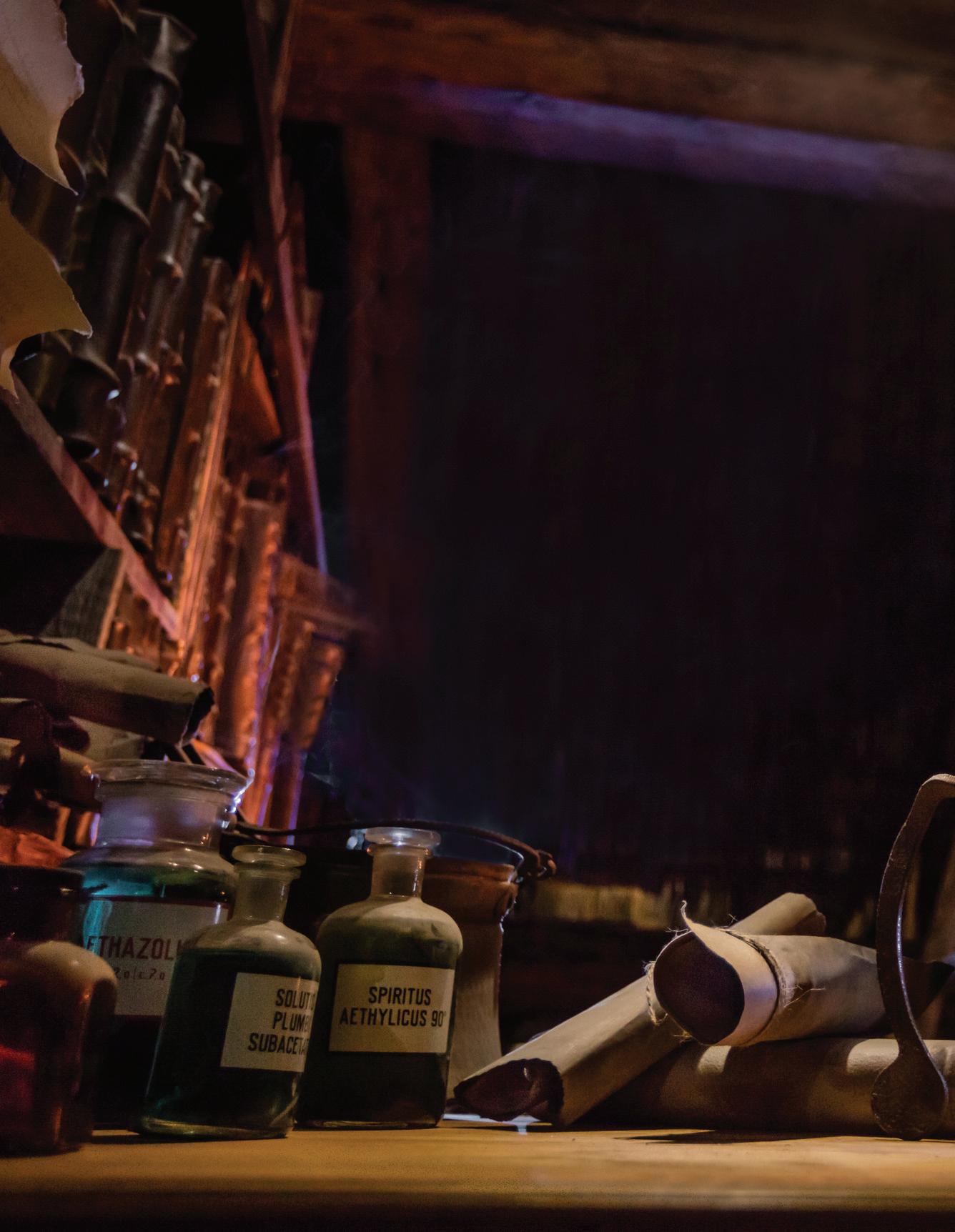
Join us as we explore the fascinating world of bitter flavors and their role in gastronomy, mixology and health.
Presented by
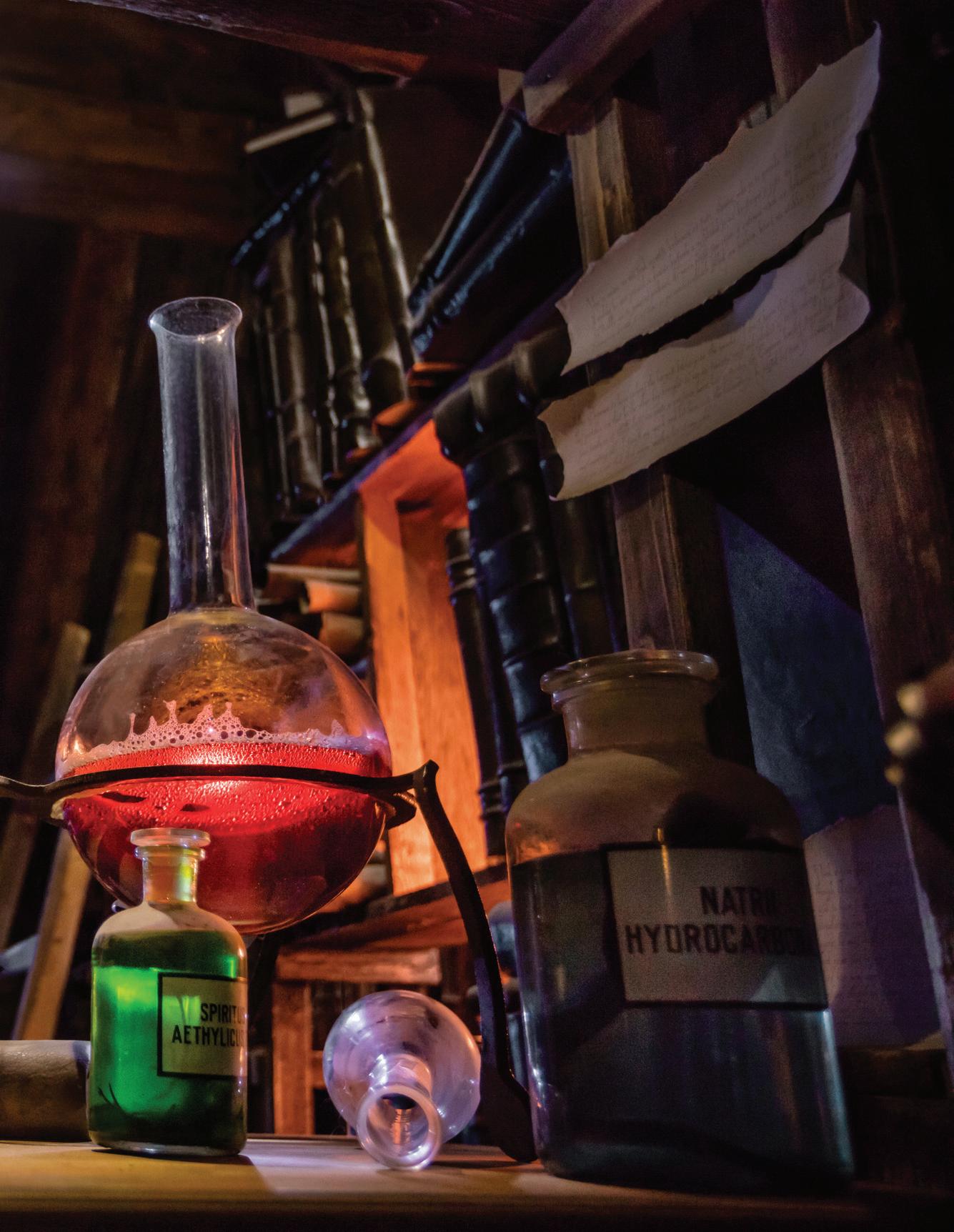
s cience has classified flavors into five main groups, as perceived by our tongues. These groups are: s weet, s our, s alty, Bitter and -most recently- u mami.
m ost foods and beverages have a combination of flavoring compounds that give them their particular “footprint,” that can encompass several of these flavor groups. This new series is devoted to the Bitter flavor, and to its impact on our everyday life.

e volutionary scientists suggest that the ability to detect bitterness evolved as a way to protect
us from toxic plants and other substances, which often taste bitter. Although it gets a bad rap, bitterness can be used to create well-rounded and desirable flavor palates. You may not be aware of it, but bitterness is present in many of our favorite foods including chocolate, coffee, wine and barrel-aged spirits.
What does the word “Bitter” mean?
m erriam- w ebster dictionary defines the word bitter (when used as an adjective) as: being, inducing, or marked by the one of the five basic taste sensations that is peculiarly acrid, astringent, and often disagreeable and characteristic of citrus peels, unsweetened cocoa, black coffee, mature leafy greens (such as kale or mustard), or ale . The origin of the word goes back to m iddle e nglish, from o ld e nglish biter , going back to g ermanic * bitra(whence o ld s axon & o ld h igh g erman bittar “acrid-tasting,” o ld n orse bitr “biting, sharp”) and * baitra - (whence g othic baitrs “sharp-tasting”), derivatives from the base of * bītan - “to bite.”
h ow Does “Bitter” a ctually t aste?
Bitterness is neither salty nor sour, but may at times accompany these flavor sensations.
m any people are innately opposed to bitter flavors, but a liking for it can and is acquired. Compounds that have an alkaline p h , such as baking soda, often have a bitter flavor.
s cientific research has found that some humans are more sensitive to bitter flavors than others.1 These individuals are referred to as “supertasters” and are often of Asian, African, or s outh American descent. Being a supertaster may explain why some individuals find the flavor of vegetables highly disagreeable. m ost vegetables contain at least some bitterness, especially when raw.
Bitter f oods
d ark, leafy greens are well known for their bitter flavor. g reen leafy vegetables often increase in bitterness as they mature. For this reason, many people prefer tender young greens to their more mature -and bittercounterparts. Bitter green vegetables include kale, dandelion greens and broccoli.
Cocoa is another food that is enjoyed for its bitter flavor. Pure cocoa has a distinct bitterness, which can be used to balance flavors like sweet or spicy in other foods.

Adding sugar and cream to cocoa significantly reduces its bitterness, making it more palatable.
l ikewise, black coffee can be quite bitter. Although sugar and cream can be added to reduce the bitterness, many grow to enjoy the sharp flavor of black coffee. The type of bean and the unique roasting method will also impact coffee’s level of bitterness.
Citrus peels are well known for its bitterness, most of which resides in the white pith. As with most bitter flavors, it can be undesirable on its own, but when combined with other flavor elements, it can provide dimension and balance. o ther fruits and vegetables that may provide bitter flavors may include grapefruit, bitter melon, mustard greens, and olives. Beverages such as tonic water, bitters, and mate tea are all also considered bitter. Before shying away from bitter ingredients in the future, explore how they can be combined with complimentary tastes to build a complex and enjoyable flavor profile.
Join
s cientific Name: c inchona officinalis

Cinchona is a genus of flowering plants in the family r ubiaceae containing at least 23 species of trees and shrubs. All are native to the tropical Andean forests of western s outh America. A few species are reportedly naturalized in Central America, Jamaica, French Polynesia, s ulawesi, s aint h elena in the s outh Atlantic, and s ão Tomé and Príncipe off the coast of tropical Africa, and others have been cultivated in i ndia and Java, where they have formed hybrids.
Cinchona has been historically sought after for its medicinal value, as the bark of several species yields quinine and other alkaloids. These were the only effective treatments against malaria during the height of e uropean colonialism, which made them of great economic and political importance. Trees in the genus are also known as fever trees because of their antimalarial properties.
The birth of homeopathy was based on cinchona bark testing. The founder of homeopathy, s amuel h ahnemann, when translating w illiam Cullen’s m ateria medica, noticed Cullen had written that Peruvian bark was known to cure intermittent fevers.[35] h ahnemann took daily a large, rather than homeopathic, dose of Peruvian bark. After two weeks, he said he felt malaria-like symptoms. This idea of “like cures like” was the starting point of his writings on homeopathy.

( s ource: https://www.wikipedia.com)
• Cinchona is used for increasing appetite; promoting the release of digestive juices; and treating bloating, fullness, and other stomach problems. i t is also used for blood vessel disorders including hemorrhoids, varicose veins, and leg cramps.
• s ome people use cinchona for mild influenza, swine flu, the common cold, malaria, and fever. o ther uses are for cancer, mouth and throat diseases, enlarged spleen, and muscle cramps.
• Cinchona is also used in eye lotions to numb pain, kill germs, and as an astringent. Cinchona extract is also applied to the skin for hemorrhoids, ulcers, stimulating hair growth, and managing varicose veins.
• i n foods, cinchona is used as a bitter flavoring in tonic water and alcoholic beverages.
( s ource: https://www.webmd.com)


i n the January issue of this series, we covered a “beginner’s” version of Angostura Bitters. By now you should be more familiar with the different botanical ingredients and with the different extraction methods, so we’re ready to look at a more “advanced” recipe:
• 1 tsp. g entian r oot
• 1/4 C. Cinchona Bark, chopped
• 1/2 C. w hole Cloves
• 1/4 C. w hole Cardamom
• 6 to 8 s ticks of Cinnamon
• 2 Tbsp. w hole Allspice Berries
• 400 ml (approximately 13.5 oz.) o verproof w hite r um or other n eutral s pirit
• 2 to 4 C. of w ater for final dilution
Place the gentian and cinchona in one jar and all spices in another. d ivide the e verclear evenly between the jars. s eal and shake the jars, and test the scent every day or so. Allow the ingredients to infuse for about four to six days, checking for a balanced scent.
Filter the solids out when done and store bitters in a fresh dropper bottle. u se the water to dilute your bitters if it comes out overpowering.
g ot r um? June 2023 - 38


a PP l E to N E stat E
l ast month, Appleton e state announced the launch of the limited-edition 17-Year- o ld l egend, an exclusive and faithful recreation of the legendary 17-Year- o ld rum crafted by J. w ray & n ephew on the e state in the 1940’s. The J. w ray & n ephew 17-Year- o ld is known around the world as the storied inspiration for the creation of the m ai Tai cocktail. l egend has it that this exquisite spirit caught the imagination of one notable bartender in particular, v ictor Bergeron, founder of the famous Trader v ic’s bar in s an Francisco. w hile experimenting with friends, it’s said that he reached for a bottle of the 17-Year- o ld rum, blended by J. w ray & n ephew, which would become his rum of choice. m edium-bodied, beautiful, and golden, the hues were evocative of the Jamaican sun. Protective to not overpower this special blend, v ictor paired it with a subtle range of ingredients, to complement the rum’s top notes. s hared with his friends from Tahiti, it was declared ‘ m aita’i roa a’e’, or simply translated, ‘the best’, and thus, a legend was born. The rum has become one of the most sought-after bottles in the world, and today, a tribute to this legend of cocktail history returns to the world stage as a limited offering, good news for both rum connoisseurs and classic cocktail enthusiasts alike. r eferencing original manuscripts and formulas,


These are the most recent and noteworthy headlines in the rum industry. i f you want us to share your news with our readers, please send me an email to: m ike@gotrum.com.
legendary m aster Blender Joy s pence created this one-time release using four very rare distillates set aside to rest on the e state to best recreate the taste profile of the prized golden blend. “ w ith our 17-Year- o ld l egend, we knew we had a special story to tell,” said s pence. “This project has been years in the making and truly one of the most challenging of my career. i n carefully re-creating the beautiful taste profile of the original rum, we’ve created an expression that is a tribute both to our own heritage, and to the heritage of the classic cocktail craft.” s pence told Forbes contributor, Tony s achs, “ w e had the formulation, we had the specification, so we know what the technical composition was, and what the sensory flavor profile is. w e worked assiduously to develop these special marques of rum. There’s one particular marque that is so unique, and you had to set the ferment in a particular way and distill in a particular way, which is not what we’re doing now for the other estate marques.” 1,500 bottles of this special expression have been produced and are available for sale. l ast month, 36 n FTs redeemable for bottles of Appleton e state 17-Year- o ld l egend were made available on BlockBar.com. Appleton e state has collaborated with Jamaican v isual Artist, o neika r ussell to develop the artwork for each n FT exclusive to BlockBar, a first from Appleton e state. The 17-Year- o ld l egend will also be available at select premium retailers starting in June, in the u nited s tates, Jamaica, the u nited Kingdom, France, i taly, Czech r epublic, s witzerland, Belgium, n etherlands, l uxembourg, Austria, d enmark, s ingapore, Taiwan, s outh Korea, n ew Zealand, Japan, and h ong Kong. 17-Year- o ld l egend is a 100 per cent pot-distilled rum, bottled at 49% AB v https://appletonestate.com/
holm
h olmes Cay r um is releasing two distinct styles of unaged rum, r hum Agricole and g rand Arôme, from d istillerie de s avanna of r éunion i sland, as a part of its s ingle o rigin collection. r eunion, a tropical island in the i ndian o cean off the coast of m adagascar, is a French overseas department. i ts fertile volcanic soil has yielded sugarcane for centuries. The s avanna distillery produces both cane juice and molasses rums. r éunion i sland Agricole r um is made from fresh pressed cane juice distilled on a s avalle copper column still. i t is bottled unaged at 50% alcohol by volume. r éunion i sland g rand Arôme r um is a molasses high ester expression produced after a ten-day fermentation period. Also distilled on the s avalle copper column still, it is bottled unaged and at a high proof, 57.5% alcohol by volume. h olmes Cay r um founder e ric Kaye says, “These unaged expressions from r eunion have never been sold in n orth America before. Both are special, small batch rums distilled from native sugarcane. The r hum Agricole and the g rand Arôme very much fit the profile of the h olmes Cay s ingle o rigin line, offering exciting and accessible younger expressions to broaden serving opportunities. These two expressions cannot be mistaken for one another, nor could they be mistaken for light-flavored white
rums made in other distilling styles. The r éunion i sland Agricole and g rand Arôme expressions are delicious and distinctive expressions of the terroir of r eunion, ready to be sipped or used in cocktails that highlight their special qualities.” e ric Kaye founded h olmes Cay r um in 2019. Frustrated that access to cask strength rums without additives was limited in the u nited s tates, Kaye saw an opportunity to focus on the hard-to-obtain aged expressions that he had encountered in e urope and the Caribbean, while championing increased transparency across the category. Kaye’s extensive knowledge of rum and relationships with highly regarded distilleries worldwide enable him to select, bottle and import rare casks, unusual expressions and exciting blends. https://www.holmescay.com/
The folks at Kuleana describe themselves as Farmers, d istillers and Blenders. As Blenders, Kuleana sources rum from distillers around the globe for their h uihui, Nanea and Hōkūlei core products. Every once and a while they are offered a gem, a rare single barrel of some forgotten rum. s ince a single barrel is not enough to create a core product, Kuleana has offered these special rums as s pecial r eleases. w hen i was on the Big i sland in d ecember, they had just released 200 bottles of Jamaica 11, a bold, funky Jamaican rum that was delicious. l ater this month, Kuleana will be releasing 200 bottles of Panama 15 at the Kuleana r um s hack in w aikoloa v illage on the Big i sland of h awaii. The journey of Panama 15 began in February 2004, when it was distilled in Panama using a molasses fermentation. i n 2014, the barrel was emptied, and the rum (about 157-liters of rum) was transported to the u nited Kingdom, where it was rebarreled and nurtured for five additional years. i t was not until 2019 that this hidden gem was discovered via barrel sample in a warehouse in e urope by Kuleana r um w orks, waiting to be shared with discerning rum enthusiasts around the globe. “ w hile we don’t know much about the origins of this particular barrel, we do know that it exudes an extraordinary level of deliciousness,” says s teve Jefferson, Founder and C eo . Jefferson added “ i n addition to making one of the world’s finest rum agricoles from fresh-pressed Hawaiian heirloom kō (sugarcane), we search the globe for world-class rums to create innovative blends. o ur s pecial r elease program is how we share the most rare and remarkable rums we find, directly with you, as we find them.”
i n other news, Kuleana is off to quite a start in 2023. Their Hōkūlei, which is a blend of seven rums from h awaii, Panama, n icaragua, Barbados and Trinidad, won a Platinum m edal from the Beverage Testing i nstitute (BT i ), a prominent authority in the beverage evaluation field, and a g old m edal from the s an Francisco w orld s pirits Competition. Their h awaiian r um Agricole earned a g old m edal and an impressive score of 93 points from BT i . This recognition from BT i further cements the h awaiian r um Agricole’s status as a world-class rum that showcases the unique terroir and culture of h awaii. Kuleana’s h uihui, a
blend of their h awaiian r um Agricole, a m artinique r hum Agricole and a light rum from Papua n ew g uinea, also won a g old m edal in the s an Francisco w orld s pirits Competition. “ w e are immensely proud of the recognition and awards received by our rums,” said Jefferson. “These accolades validate our unwavering commitment to quality and authenticity. w e take pride in our process and in our products which are gluten-free and have no added sugars, flavors, or coloring. w e aim to deliver exceptional spirits that embody the spirit of aloha. These awards serve as a testament to the hard work and passion of our team.” https://kuleanarum.com/
Plantation announced the release of the second series of the Plantation r um v intage Collection called ‘ u nder the s ea,’ featuring six exceptional bottlings produced in limited quantities, all selected by Alexandre g abriel, o wner and m aster Blender of Plantation r um. e ach bottling is from a different rumproducing country, distinguished by the iconic colors and local marine animals native to six of the great terroirs of rum, inviting fans to plunge into a new world of rum.
• PA n A m A 2008, 45.7% AB v (91.4 proof) – Panama is the home of Alcoholes del i stmo distillery, which produced this 2008 vintage. Panama 2008 is made from molasses from the locally grown sugarcane. d istilled in a column still and aged for 12 years in ex-bourbon barrels in Panama’s tropical atmosphere, it was transported by boat to France to mature an extra year.
• JA m A i CA 2007 – Clarendon ms P, 48.4% AB v (96.8 proof) - Jamaica is the home of the venerable Clarendon d istillery, which produced this vibrant expression. m ade with molasses from locally grown sugarcane, this vintage was distilled in a v endome d ouble- r etort copper pot still that produces an elegant aromatic profile, lighter than the traditional pot still Jamaican rum.
• F i J i isl A nds 2009, 49.5% AB v (99 proof) – Fiji is the home to the r um Co. of Fiji d istillery. This 100% pot still rum is the product of an exceptional terroir combined with artisanal savoir-faire and traditional production methods. After a four-tofive-day fermentation, the molasses is distilled in a traditional copper still. The rum is aged for 10 years in the tropical climate, followed by three additional years in the continental climate of France.
• gu YA n A 2007, 51% AB v (102 proof) - This exceptional g uyanese rum is a blend of rums resulting from one-week fermentations distilled in three historic stills, including the Port m ourant double wooden pot still. First matured for thirteen years in 200-liter ex-bourbon casks in the tropical climate, it is then further aged for two years in France.
• BA r BA dos 2013 (50.2% AB v, 100.4 proof) - This exceptional rum was selected from the cellars of w est i ndies r um d istillery by Alexandre g abriel, with the help of Andrew h assell, m anaging d irector and rum historian, and d on Benn, m aster
d istiller at wird . A combination of rums from both pot and column stills, this blend was first matured for 8 years in the cellars of w est i ndies r um d istillery, then further aged for another year in France.
• vene Z uel A 2010 (52% AB v, 104 proof) –v enezuela is home to d estileria s ofa, a familyowned distillery with more than 200 years of rum making expertise. d istilled in a column still and aged for eight years in their cellar, carefully selected casks were then aged for an additional four years in France.
https://www.plantationrum.com/
m ontanya d istillers is celebrating its 15-year anniversary in 2023. w hat began as a small, familyrun business is now a successful brand selling rum across the u nited s tates and in 7 countries in the u K and e urope. The original d istillery (2008-2011) was on Blair s treet in s ilverton in a 100 year-old, 800 square foot building. The complete operation took place on three levels: fermentations in the dirt-floored basement, distilling and tastings on the main level, and aging and bottling upstairs. The Tasting r oom was often packed shoulder to shoulder with skiers and hikers drinking double w hite r oom cocktails. i t was a grand adventure. i n 2011, Karen h oskins and her family decided to move to Crested Butte to open up more opportunities for the whole family and their businesses. Today, m ontanya d istillers occupies over 10,000 sq. ft of commercial space and is poised for continued growth after a challenging few years of expansion and pandemic. There have been many challenges and set-backs along the way. “Access to capital, competition against larger companies, and the fact that we don’t have a famous celebrity representing us are a few of the many hurdles,” says h oskin. “ i n addition to the fact that rum was so far outside the norm, American mountain rum no less, when we started.” d espite the odds, h oskin has scaled her business and increased production tenfold. m ontanya will release various limited-edition anniversary items throughout the year, including limited-edition glassware, hats, and t-shirts. They will also be releasing their first-ever rum liqueur this summer (only available in their tasting room initially), which will feature a burst of vanilla, clove, orange, and lemon. https://www.montanyarum.com/
i slay s cotch whisky maker Kilchoman announced planning permission has been received to build a rum distillery on the island of Barbados. n ine acres of land and a derelict mansion house were purchased at Bentley m ansion in the Parish of s t. Philip in August 2021. The plan is to erect buildings to house the distillery, mill and cask warehouse, purchase sugar cane from the fields surrounding Bentley m ansion, crush it on site and produce rum from sugar cane juice and cane syrup. Production will be from two copper pot stills followed by maturation and bottling on site. Anthony w ills will be teaming up with Frank
w ard, former m ount g ay m anaging d irector, who will be consulting on the project and advising on specific rum production methods. This will offer a combination of existing expertise in single malt whisky production and m r. w ard’s vast knowledge in rum production. Kilchoman has developed a network of distributors around the world and plan to utilize the same distributors for our premium rum. Anthony w ills commented, “this is an exciting development for Kilchoman and we look forward to sharing more news as the project takes shape.” https://www. kilchomandistillery.com/
mo
m ount g ay r um has unveiled the latest addition to its m aster Blender Collection series, The PX s herry Cask e xpression. The limited-edition rum series debuted in 2018 and celebrates m ount g ay’s heritage and expertise in rum making. The first release in the series was the X o : The Peat s moke e xpression, created by former m aster Blender Allen s mith. i n 2019, when m aster Blender Trudiann Branker took over, she released the expressions Pot s till r um, The Port Cask e xpression, Andean o ak Cask, and The m adeira Cask e xpression. For this year’s release, Branker chose barrels from Pedro Ximenez s herry that previously held fortified wine. The PX s herry Cask e xpression blends both pot and continuous still rums that have spent at least twenty years in American whiskey barrels and aged them another year in the sherry barrels. Branker said “ g oing through some of our oldest rums to find the right ones was an incredible journey, tasting rums that have been placed in our bonds two decades ago. i was thrilled to find 20-year-old rums that stood up in terms of body and character to benefit from being finished in PX s herry casks, and i ’m honored to add this to our m aster Blender Collection.” https://www.mountgayrum.com/
tad rinks i nternational reported that Takamaka r um from the s eychelles has released the second round of two of the most popular expressions from its s t Andre s eries, Pti l akaz and g rankaz. m aster Blender s teven r ioux worked closely with co-founders Bernard and r ichard d’ o ffay to reimagine the liquids as part of the natural evolution of the collection.
Takamaka creates blends using their own cane and molasses rums, their own pot and column distilled rums and Caribbean aged Bajan r um. Pti l akaz (45.1% abv) blends traditional, pot-distilled s eychellois cane rum, lightly aged in new French oak and ex-ruby port barrels, with a three-year-old pot and column distilled molasses rum aged in first fill exbourbon and an eight-year-old ex-bourbon molasses rum from Barbados’ acclaimed Foursquare. g rankaz (51.6% abv) blends traditional pot-distilled s eychelles cane rum with column and pot-distilled molasses rum, respectively aged four years in medium toast virgin French oak and three years in first-fill ex-bourbon barrels. These are blended with an eight-yearold Bajan Foursquare molasses rum. https://www. takamakarum.com/
The CoreBev g roup announced the release of its latest brand, Kavo, the world’s first g reek rum. m ade with locally sourced g reek-island ingredients, Kavo is a new rum brand that promises to deliver a unique and premium rum experience unlike any other. The product will be available in g reece starting in June and will later expand to the u nited s tates and Canada starting summer of 2023. “ i wanted to create an authentic product that was unique to my roots and upbringing,” says CoreBev founder and C eo s telios s tavrianos, whose parents are g reek immigrants. “ i ’m very passionate about where i came from, and i wanted to take that passion and put it into a bottle. And this is the first of its kind.” Kavo is a premium, white rum that takes inspiration from the rich cultural heritage and natural beauty of g reece’s picturesque islands. The use of unique fruits and botanicals, such as mandarins from s antorini and mastic from Chios, in addition to sugar cane and other herbs and spices found only on g reek islands, give Kavo a distinct fresh and sweet flavor and aromatic profile that sets it apart from other rums on the market. Kavo is perfect for those seeking a new and exciting experience in the rum category. “Kavo has been almost 3 years in the making, and we obsessed over every single detail.” d imitrios Zahariadis, CoreBev’s Chief o perating o fficer, who worked closely on the Kavo brand, added “this is a proud moment for us to finally release this product.” https://www.corebev.com/
Koloa r um Company has partnered with Allied Beverage g roup to expand distribution of eight premium rum products into the n ew Jersey market. Available now for purchase, rum enthusiasts and patrons can choose from a diverse portfolio of flavors including w hite, g old, d ark, s pice, Coconut, Cacao, Coffee, as well as the five-year, Kauai r eserved s ingle-Barrel Aged rum. Koloa r um products are artfully distilled, blended and bottled in Kalaheo, Kauai. Pure cane sugar and pristine rainwater from Mount Waiʻaleʻale come together to produce single-batch rums with remarkably rich flavors and smoothness that capture the essence of “The g arden i sle” in a delicious range of premium rum products. “To meet the steadily increasing demand for our premium rum products, it is critically important that we align with the absolute best distribution partners in each of the markets we serve, and n ew Jersey is no exception,” said Bob g unter, president and C eo of Koloa r um Company. “ n ew Jersey is our latest project launch and we’re ecstatic to share The s pirit of Aloha from The g arden i sle to The g arden s tate. “ w e’re excited to represent Koloa r um, known as h awaii’s s pirit of Aloha,” said s ara h armelin v P of d igital & i nnovation at Allied Beverage g roup. “Koloa r um fits perfectly into our brand portfolio with its uniquely crafted premium rums. The response from our customers is remarkable and the company has truly exceeded our expectations.” https://koloarum.com/


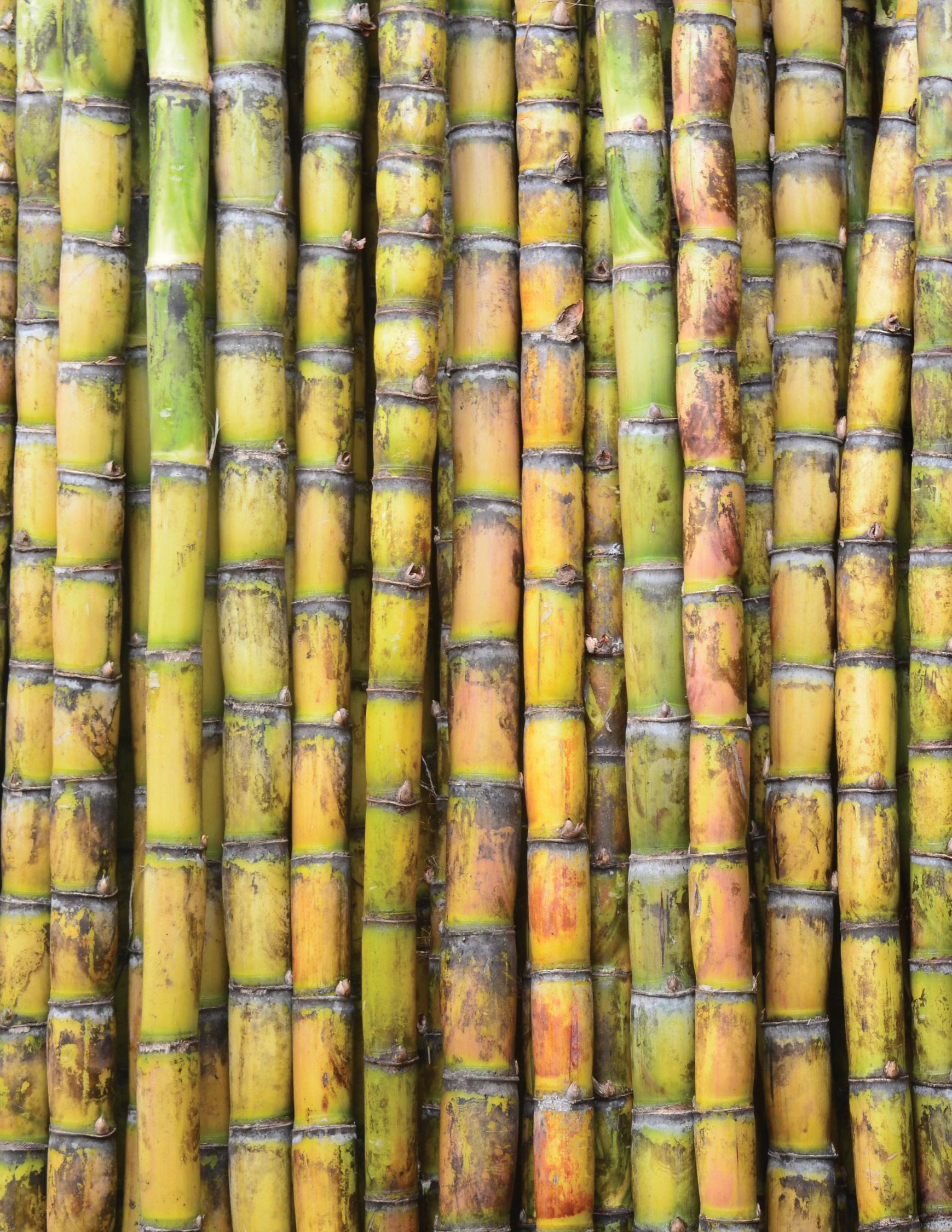
r egardless of distillation equipment, fermentation method, aging or blending techniques, all rum producers have one thing in common: sugarcane

w ithout sugarcane we would not have sugar mills, countless farmers would not have a profitable crop and we would not have rum!
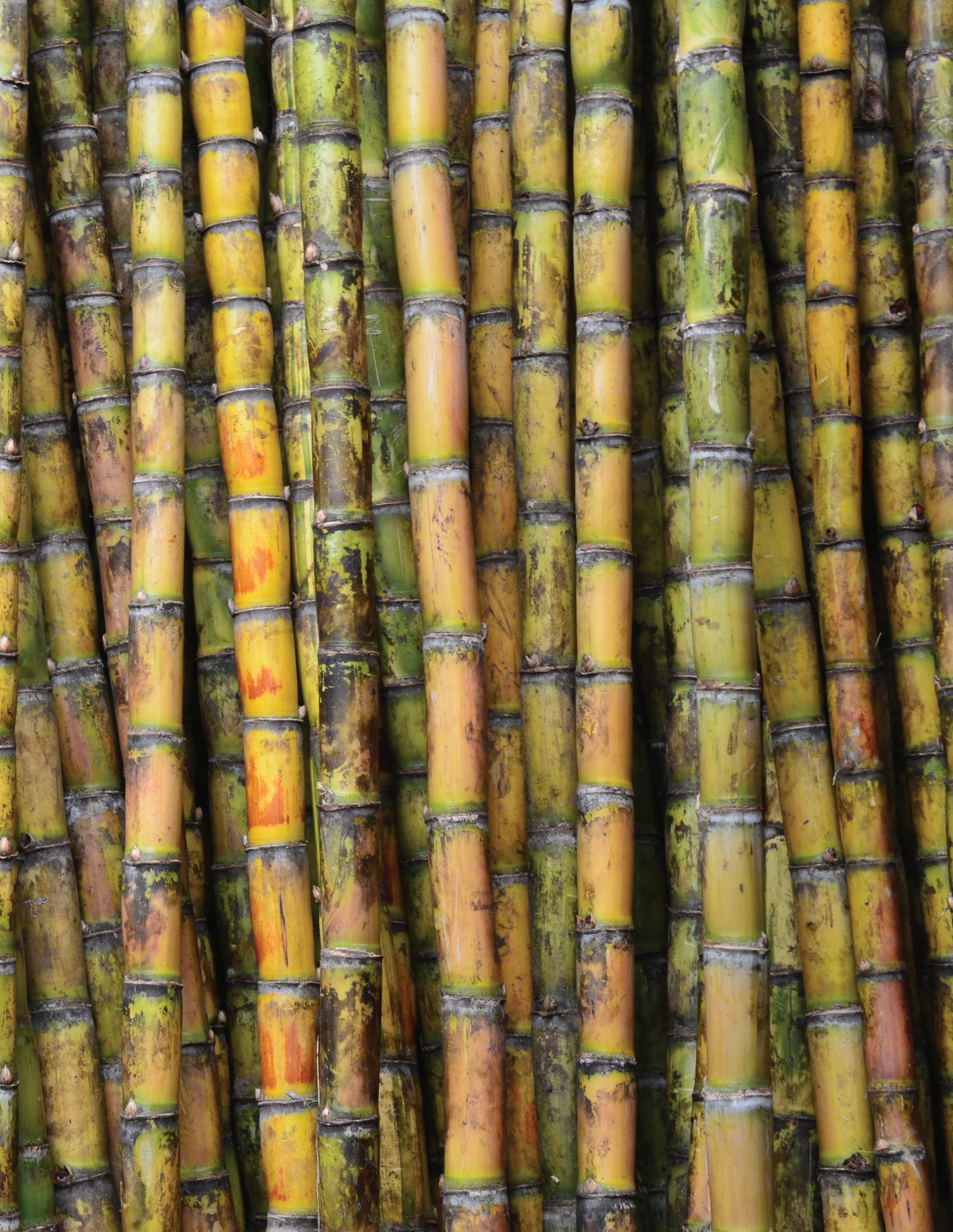
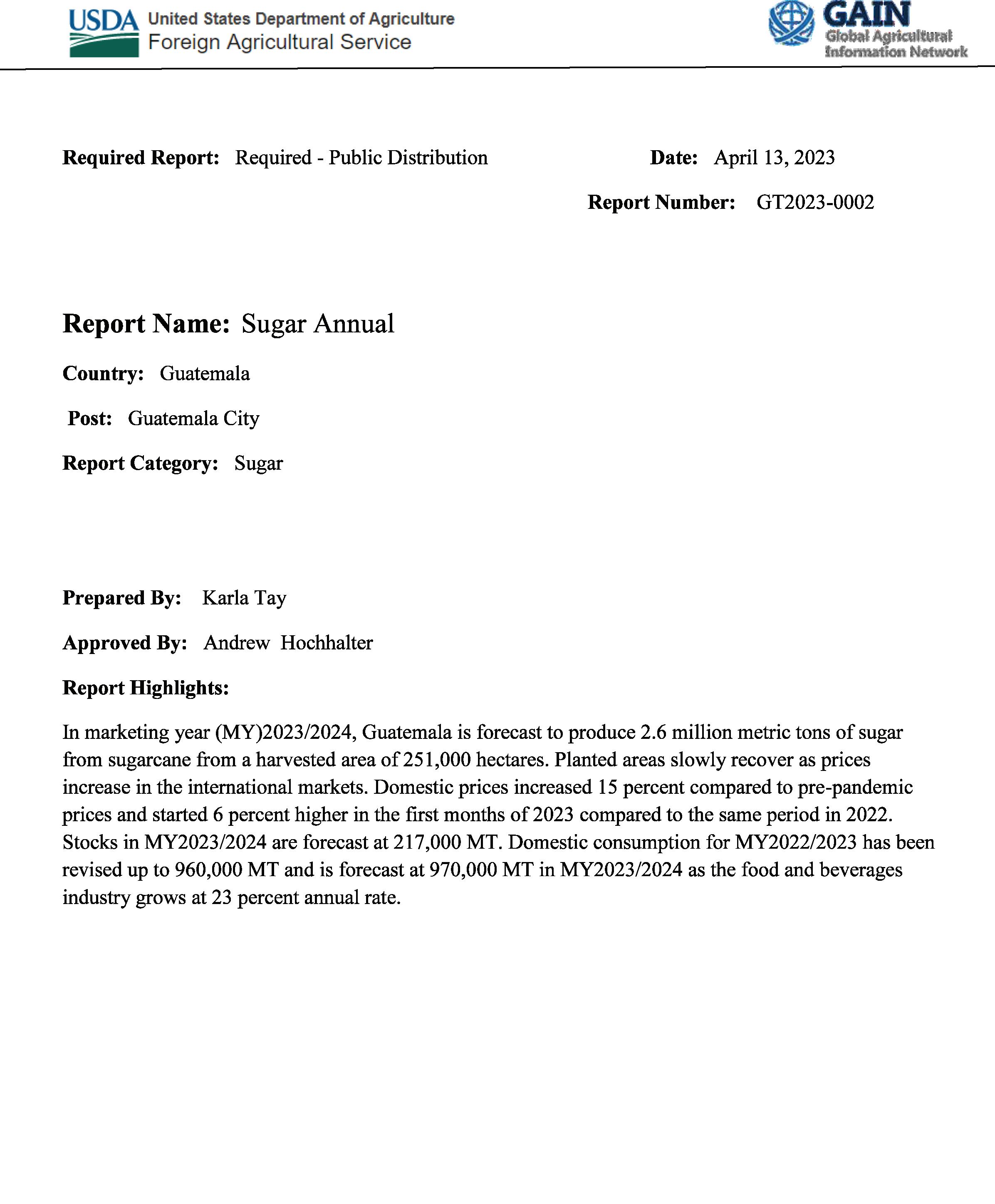






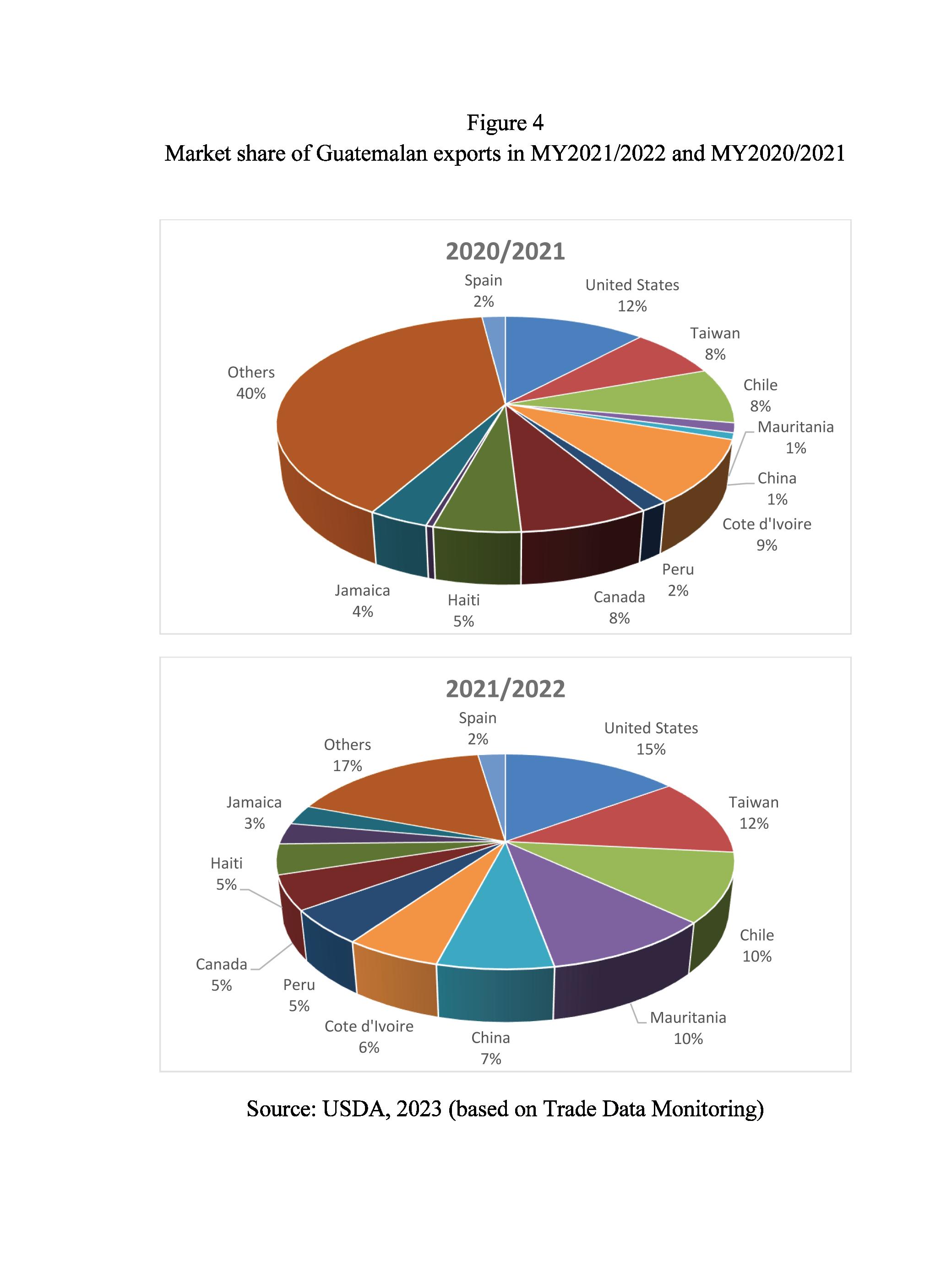






 by Philip i li Barake
by Philip i li Barake
m y name is Philip i li Barake, s ommelier by trade. As a result of working with selected restaurants and wine producers in Chile, i started developing a passion for distilled spirits and cigars. As part of my most recent job, i had the opportunity to visit many Central American countries, as well as, rum distilleries and tobacco growers.
But my passion for spirits and cigars did not end there; in 2010 i had the honor of representing Chile at the i nternational Cigar s ommelier Competition, where i won first place, becoming the first s outh American to ever achieve that feat.

n ow i face the challenge of impressing the readers of “ g ot r um?” with what is perhaps the toughest task for a s ommelier: discussing pairings while being well aware that there are as many individual preferences as there are rums and cigars in the world.

i believe a pairing is an experience that should not be limited to only two products; 2023
it is something that can be incorporated into our lives. i hope to help our readers discover and appreciate the pleasure of trying new things (or experiencing known things in new ways).
A couple of days ago, i saw on i nstagram that a friend (Jerry g itany) was smoking a Partagás g ran r eserva and, just like looking at food can make you hungry, i knew then and there that for this pairing i would be smoking a Partagás. i selected a s erie P n °2 (52 r ing x 156 mm), which will give me a little more than an hour of smoking time, so i can calmly match the pairing to the intensity of the cigar.
For the cocktail i thought about something that could easily be prepared at home, a mix of ingredients that we’ve used before. i wanted to revisit the r um m anhattan, with a couple of special touches, such as the addition of espresso, to add a new dimension to the cocktail.
The recipe is as follows:
• 5 oz. Bacardi r um 10 Year o ld
• 1 ½ oz. v ermouth r osso
• 1 s hot of e spresso

• o range Peel for g arnish

s tart by filling the m artini glass with a lot of ice to chill it. Add the espresso shot so that, in addition to being chilled, the glass will also have the flavors and the foam from the coffee. m eanwhile, in a cocktail shaker or mixing glass, combine the rum and the vermouth with a couple of ice cubes, to chill the mixture.
n ow discard the contents of the m artini glass and you’ll notice that it is nicely chilled and that the coffee remnants linger, which will
Philip # gr CigarPairing

play an important role in the next step. After mixing the rum and vermouth in the mixing glass, strain the mixture (remove all the ice) into the m artini glass. You’ll notice that the remaining touch of coffee gives the drink a new dimension, thus the name d irty r um h attan. w e then squeeze freshlycut orange peels, to spray the aromatic citric oils on the cocktail, which are the perfect and refreshing final touch.
i t is time to light up the cigar. m aking a clean cut is easy with a classic Pirámide like this one from Partagás. i remind myself that this cigar has been in my humidor for a very long time, the intensity level may not be at the level expected for this brand. i also remember previous cigars i ’ve smoked from the same box, all of them outstanding and thoroughly enjoyable, even into the last third, so this one should be no exception.
d uring the first third of the smoking, the cocktail comes across
well-rounded. The notes from the rum and from the vermouth are balanced, suggesting that drier or higher AB v rums would not work in this cocktail. The flavors in the cocktail highlight the tannins and leather notes, with a warm finish, while the aromas are undoubtedly citric and red wine, making this a complete pairing throughout the length of the smoking session. Just as i had suspected prior to lighting it up, after being aged for so many years, the cigar is excellent during the first and second thirds, never hiding its Cuban origin.
i hope that you can recreate this cocktail, taking care to use a good v ermouth r osso, and making sure to chill the glass and to use fresh orange peels to give it the unique touch.

Cheers!
Philip i li Barake # gr CigarPairing





